Fighting aliens with 'Space Force' and clovers at HI-SEAS — Commander's report: lunar day 6

Dr. Michaela Musilova is the director of Hawaii Space Exploration Analog and Simulation (HI-SEAS) program, which conducts analog missions to the moon and Mars for scientific research at a habitat on the volcano Mauna Loa. Currently, she is in command of the two-week Selene IV lunar mission and contributed this report to Space.com's Expert Voices: Op-Ed & Insights.
Commander's report for the Selene IV moon mission at HI-SEAS
Lunar day 6 (March 18, 2021)
The alien dust machine — that is what the Selene IV crew has been blaming for the bad weather that we have been having during our analog lunar mission. Today is our sixth day on mission and we have barely been able to see anything outside our window due to the massive dust storm raging outside the habitat (aka a thick fog outside the HI-SEAS habitat on the volcano Mauna Loa in Hawaii).
The crew quickly became skeptical that such storms would occur naturally on the moon, so instead they blame aliens for this activity.
Related: The purge of the HI-SEAS habitat — Commander's report: lunar day 2
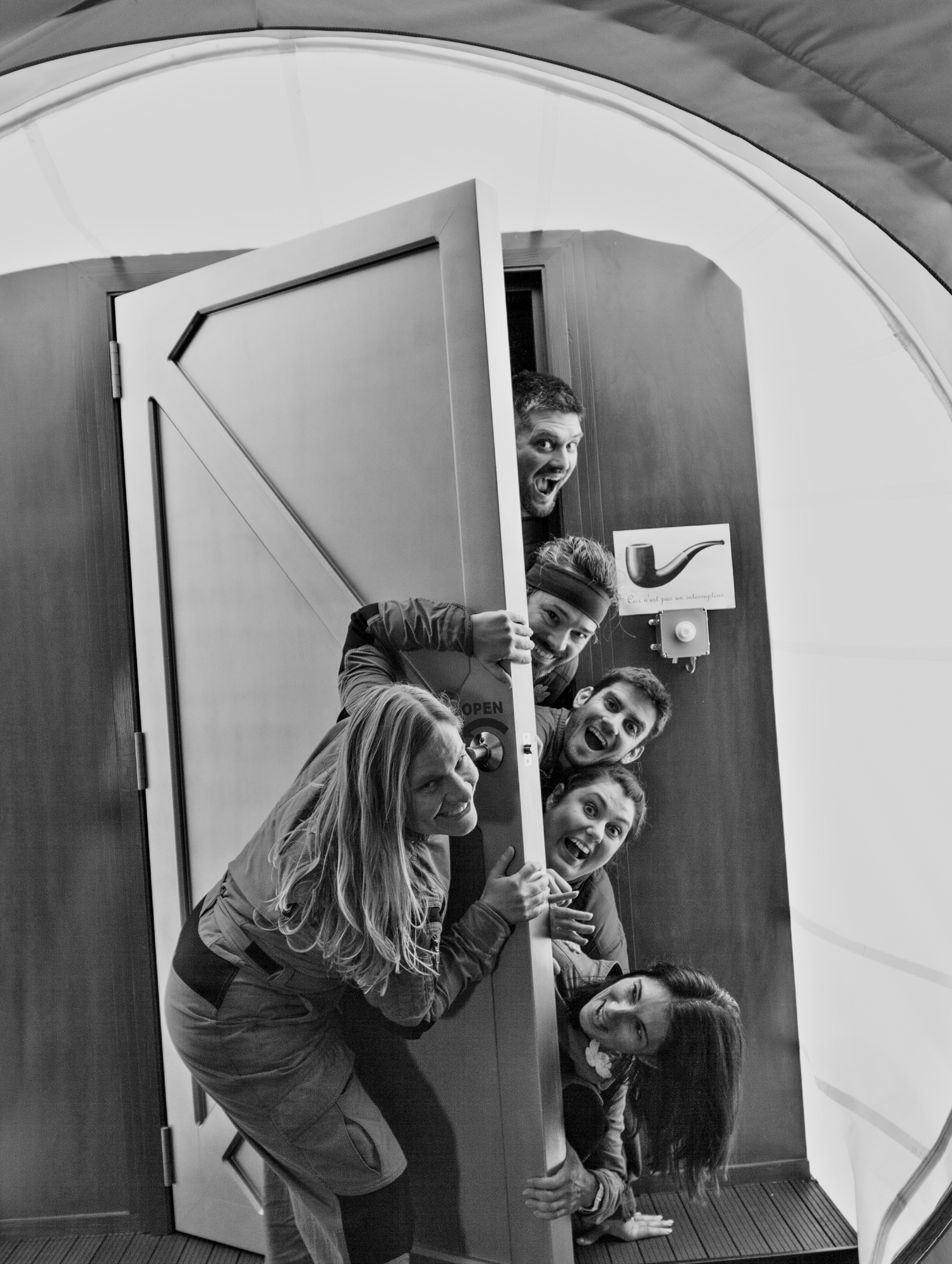
Personally, I'm rather happy that the "aliens" are accused of complicating the conditions of our mission instead of me. A number of previous crews used to joke that I'm turning on a hidden fog machine to challenge them and make them deal with being stuck indoors for long periods of time.
Get the Space.com Newsletter
Breaking space news, the latest updates on rocket launches, skywatching events and more!
During our analog missions, crews can't leave the habitat during bad weather. This is both for their safety to not get lost and hurt in the "dust storms," but also because our simulated spacesuits would get damaged in such conditions. This year, the weather has definitely been keeping the crews on their toes during our missions! Or is it really aliens that are torturing us?
The Selene IV crew decided to take the offensive and requested that our volunteers from the Mission Support team on Earth ask the U.S. Space Force to destroy the aliens' dust machines. Funny enough, a local military base in Hawaii, which we have nicknamed "Space Force," has actually started testing their artillery near our HI-SEAS habitat. While they have not yet "destroyed the dust machines," we appreciate their efforts to help us — at least that is what my crewmembers tell themselves to find comfort from both the dust storms and the constant bombing noise that we hear coming from "Space Force."
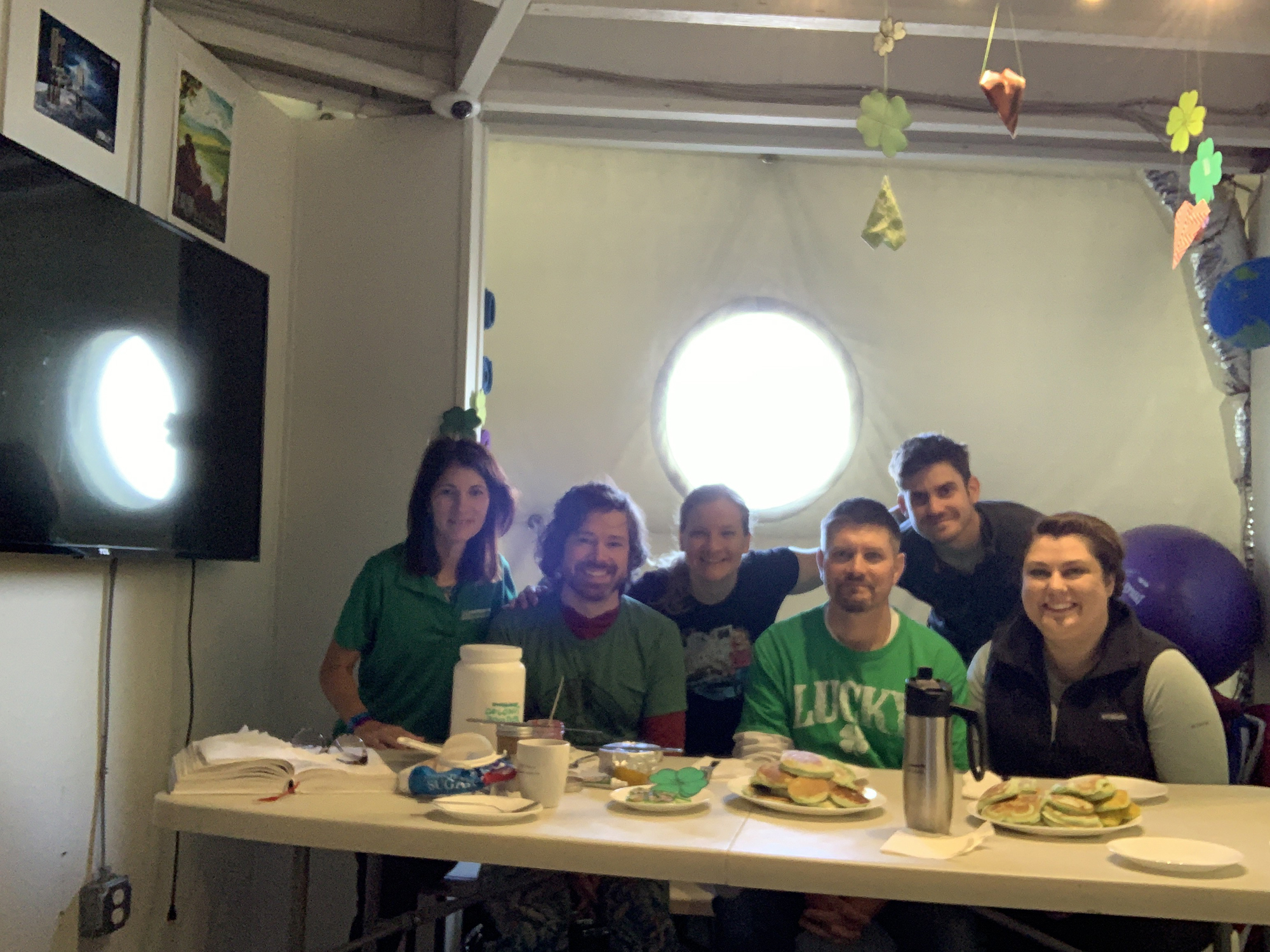
All jokes aside, the real comfort that we have experienced during our mission has been from one another. The crew has been keeping themselves busy with their research projects and fun group activities, such as celebrating St. Patrick's Day. The entire habitat transformed into a forest of clovers within a couple of hours and so did our food. Everything was either green or clover-shaped. Even though I teased my crewmembers for their enthusiasm to celebrate this occasion in style, I was very happy that it cheered them all up and that they worked so well together to make our time on mission even more special.
The great teamwork and "taking one for the team attitude" also manifested itself when it was time to do chores. At HI-SEAS, we have a urinal that everyone needs to use, regardless of gender. In this way, we protect the compost toilets from being "drowned" by too much liquid from the crew's urine. After a few months, the urinal filter needs to be replaced and that's definitely not the most pleasant job to do. Our Crew Engineer Jack Bryan kindly took on this unpleasant duty and I volunteered myself to empty the compost toilets halfway through the mission. It's a necessary chore and I don't mind doing it, as I know that most crewmembers struggle to deal with the views and smells that are involved with that duty.
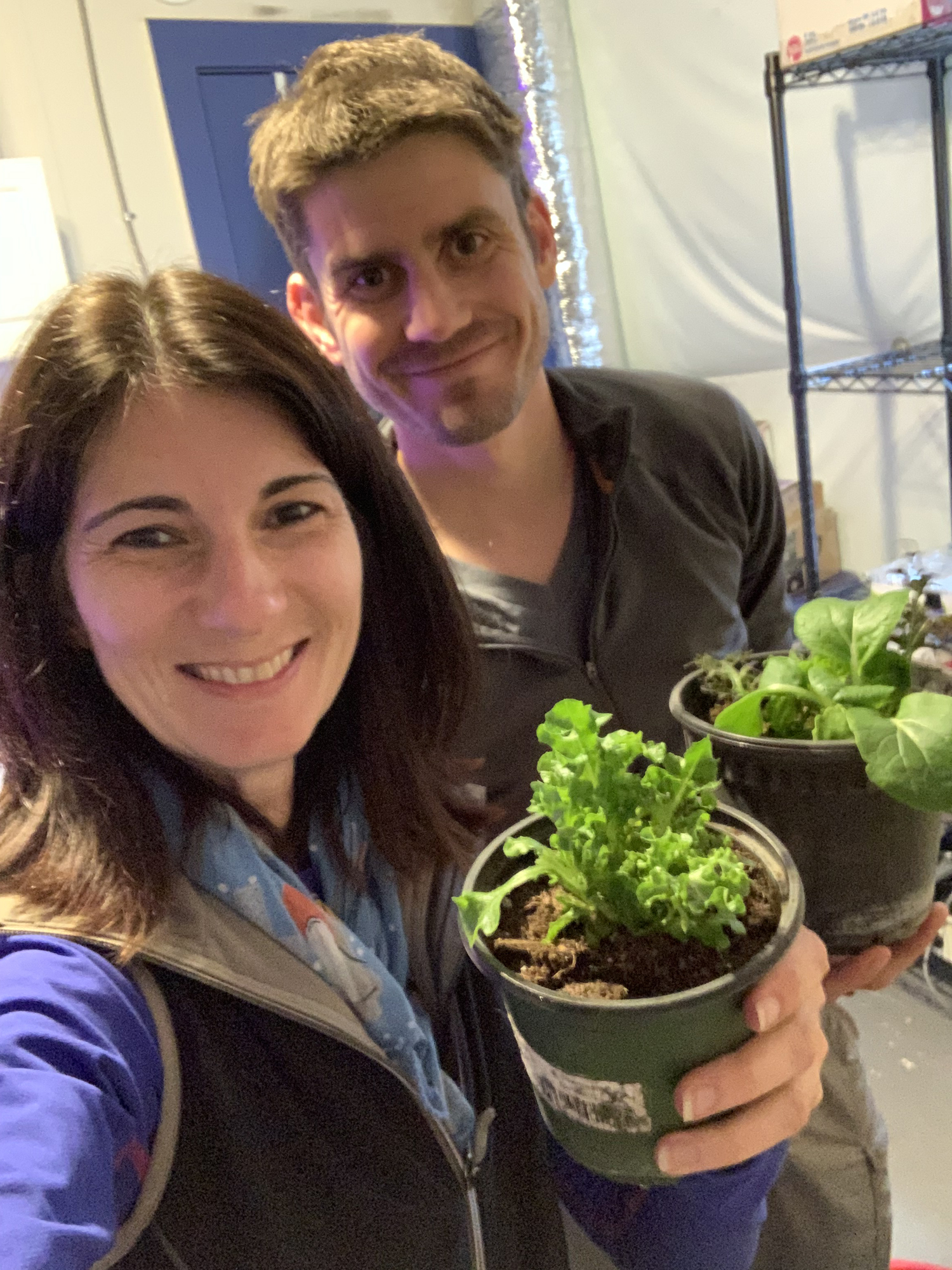
These crew interactions have been a great source of inspiration for Science Communication Officer Monica Parks. She prepares the social media text and pictures, which Mission Support volunteers then post on the HI-SEAS social media pages. Monica has also been observing the crew for her research study. She has found that there are many similarities in the way each one of the crewmembers has reacted to rejection and obstacles in life. The spirit of perseverance is very strong with this group of analog astronauts. For the remainder of our time here, Monica will be having more in-depth conversations with the crew to confirm her various observations about our resilience and drive.
Growing different types of plants has been another source of distractions and positive energy for the crew. These include the Mission to Mars growing spinach using human hair experiment that the Selene III crew started, as well as our long-term hydroponic greenhouse Lettuce Grow experiment in the habitat. Crew Operations Officer Lori Waters has been taking care of these experiments together with Jack. Lori's personal project is also focused on food crop production methods to produce nutrient-dense clovers and microgreens. The clover seeds in the ExoLab experiment, which is paired with the Magnitude.io experiment aboard the ISS, have germinated. They have a first set of leaves showing strong development in this extreme environment at HI-SEAS.
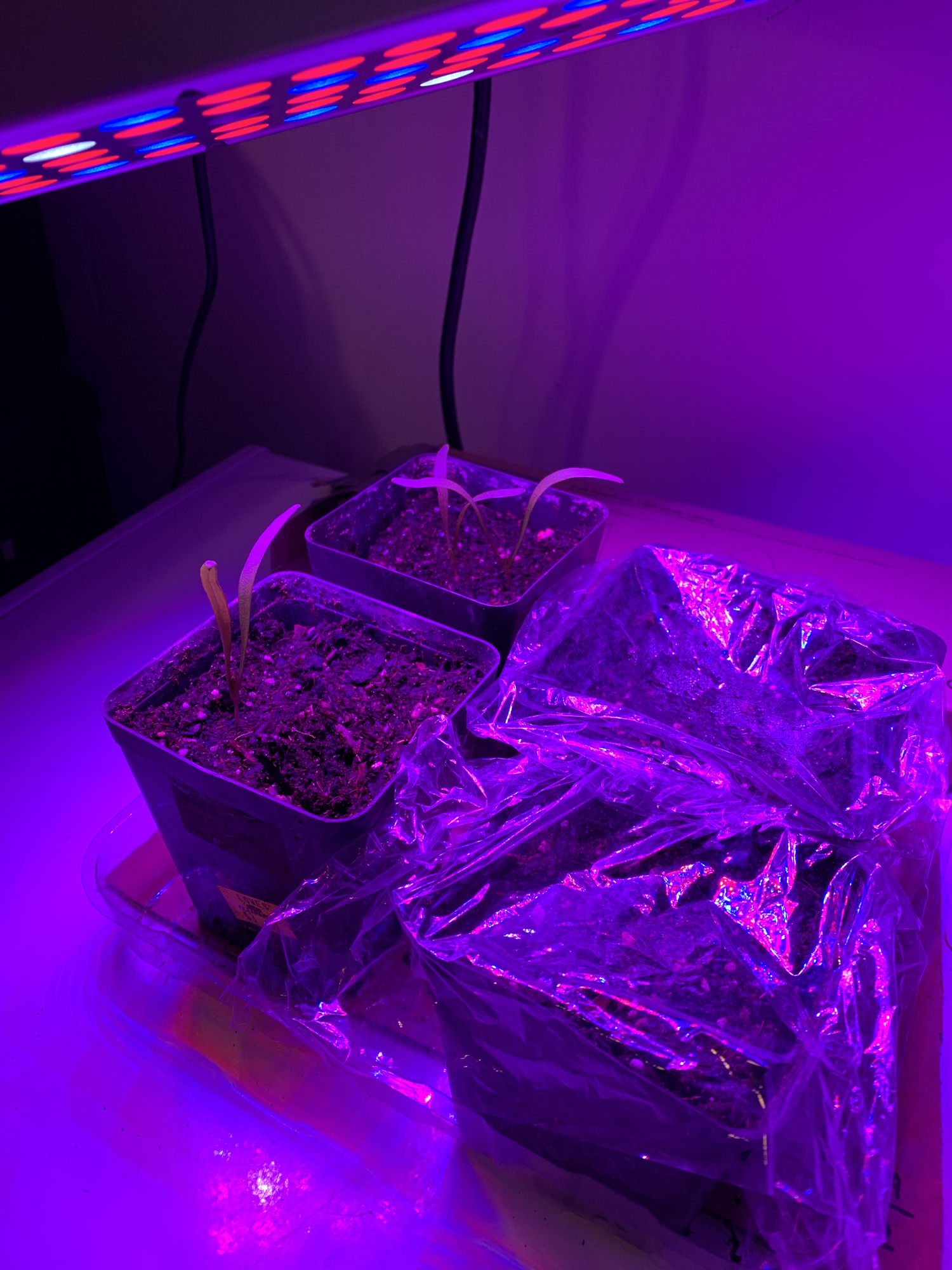
In situ resource utilization (ISRU) Mission Specialist Cameron Crowell's research relies on gathering samples from the surrounding analog regolith during a moonwalk, which hasn't been possible yet due to the dust storms. In the meantime, he has been preparing his techniques for acquiring the geologic samples, since we may only get a very short window between dust storms to perform a moonwalk. Cameron has been documenting life in the habitat for outreach purposes as well, such as for the Space Frontier Foundation that he's on the board of directors for.
Our Crew Systems Engineer Bill O'Hara has completed much of his data gathering tasks in support of a habitat design and operations case study. This project on HI-SEAS is for the Sierra Nevada Corp., where he's a lead systems engineer. Bill has also completed preparations for evaluating lava tubes for habitability, pending the opportunity to execute moonwalks. Like Cameron, he has prepared all of his equipment to be as easy to use in the field as possible, despite the time constraints for moonwalks and the restrictions of our analog spacesuits.
Jack is yet another crewmember that has been limited by the dust storms that are raging outside. He thus focused on an initial catalog of the habitat's waste materials for combination with in situ harvested materials during moonwalks. Jack has been surprised by the results to date, which is why he is reevaluating his preliminary hybrid material composition estimates. The crew generates a considerable amount of paper waste, but significantly less plastic waste than he anticipated. For these reasons, he is looking into the possibility of adding some of the fibrous paper waste into the hybrid material to add toughness, which would be similar to how fiberglass works with resin.
Commander Musilova signing off to another night of keeping our fingers crossed that the alien dust machines will be destroyed. "Space Force" may have more luck tonight so that we'll be able to venture on our first moonwalk of the mission tomorrow. If not, I'm sure that the crew will come up with yet another fun way to keep ourselves from becoming lunatics on the moon.
Follow Michaela Musilova on Twitter @astro_Michaela. Follow us on Twitter @Spacedotcom and on Facebook.
Join our Space Forums to keep talking space on the latest missions, night sky and more! And if you have a news tip, correction or comment, let us know at: community@space.com.
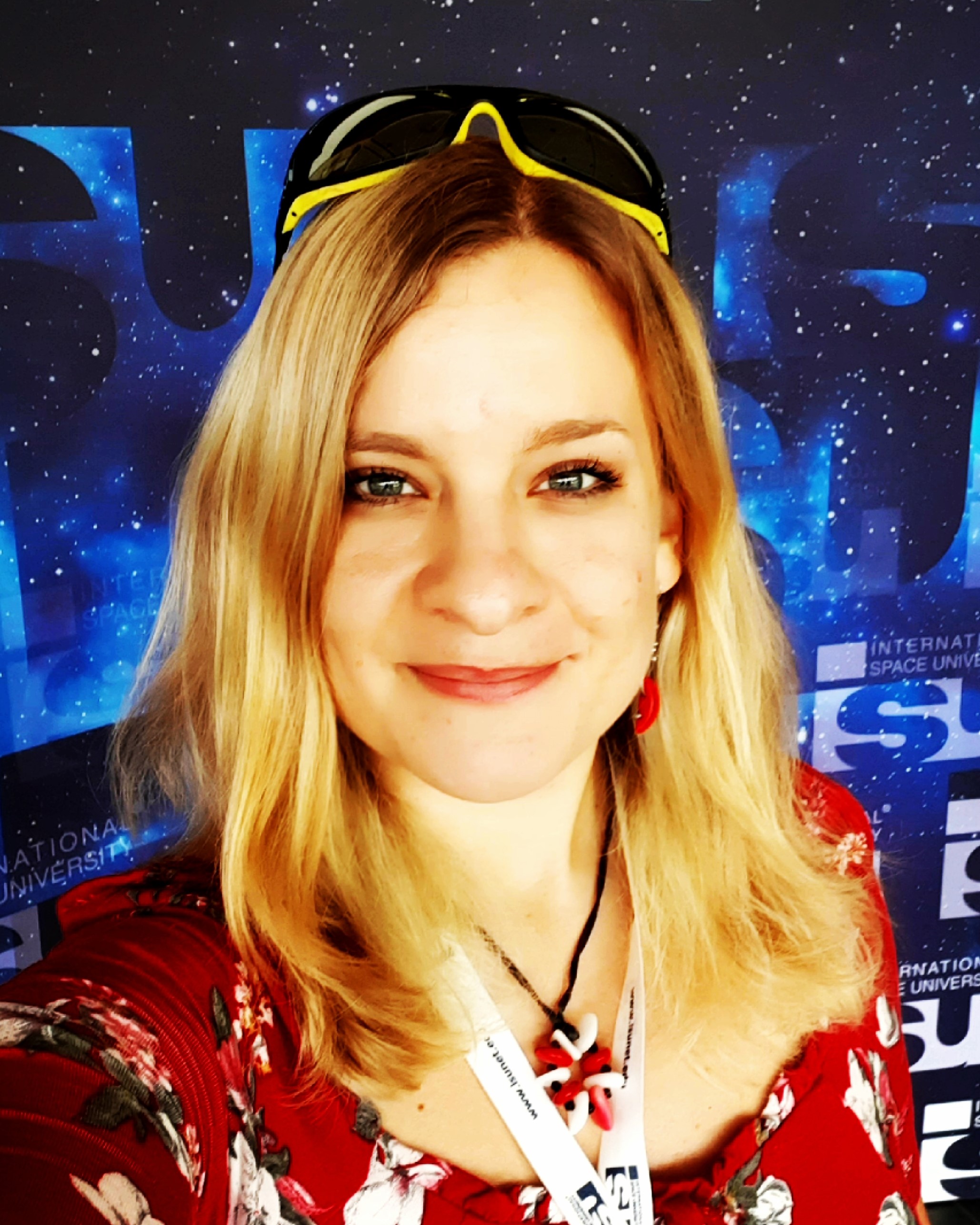
Dr. Michaela Musilova is an astrobiologist with a focus on life in extreme environments. She has a PhD degree from the University of Bristol and is a graduate from the International Space University's (ISU) Space Studies Program. Michaela's space research experience includes working at the NASA Jet Propulsion Laboratory, University of London Observatory, Canada-France-Hawaii Telescope, on NASA's and the U.K. Space Agency's MoonLite project, being an analogue astronaut and Commander of numerous simulated missions to the moon and Mars at the HI-SEAS station in Hawaii, and at the Mars Desert Research Station in Utah. Michaela is currently the Director of HI-SEAS, as part of the International MoonBase Alliance. She is also a visiting Professor at the Slovak University of Technology, Vice-Chair of the Slovak Organisation for Space Activities, Adjunct Faculty at ISU and the Senior Research Adviser for Mission Control Space Services Inc.
She has received numerous prizes and grants, including the Emerging Space Leaders Grant from the International Astronautical Federation (2016) and the Women in Aerospace – Europe Young Professional Award (2016), and she was selected as one of the most promising 30 under 30 by Forbes Slovakia (2015). Michaela is also actively involved in the Duke of Edinburgh's International Award, as a patron of the program in Slovakia and an Emerging Leader Representative for Europe, Mediterranean and Arab states. Furthermore, she enjoys participating in STEAM outreach activities from teaching at schools, giving public presentations, to working with the media and more, as well as encouraging people to pursue their dreams. For instance, she is an Advisory Board Member of the STEM Punks immersive programs for students and teachers.









